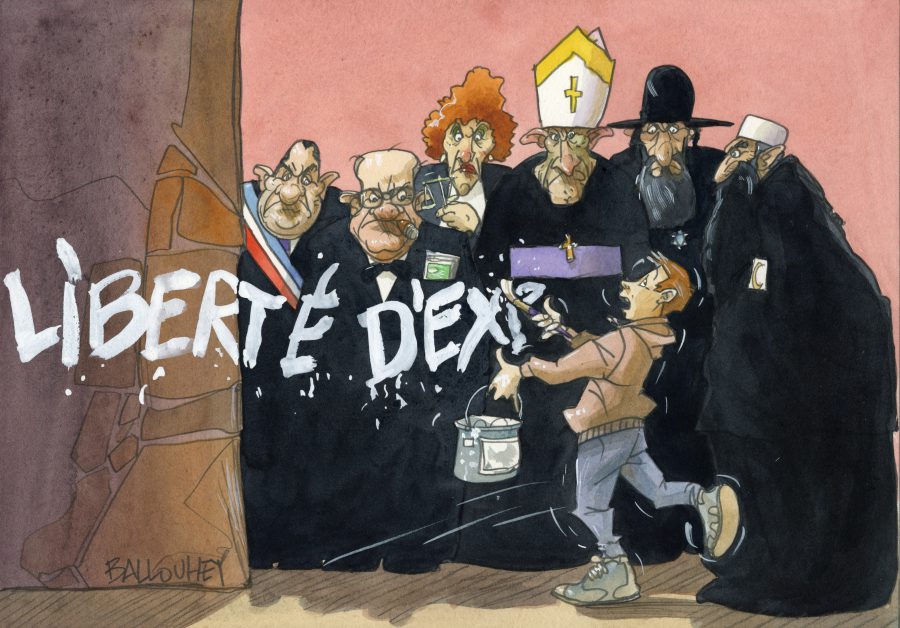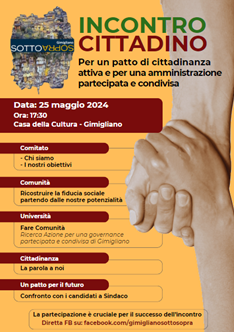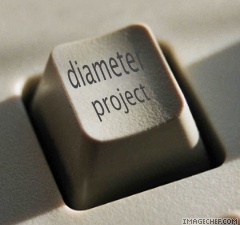[responsivevoice_button rate=”1″ pitch=”1.2″ volume=”0.8″ voice=”UK English Female” buttontext=”listen to this”]
by Thierry Vissol, European, Director of Librexpression

Talking about freedom of expression is impossible without addressing the theme of satire, whether written, filmed or drawn, particularly satirical cartoons, caricatures, not so much because the massacre of Charlie Hebdo team in Paris on January 2015 was the most extreme violent hate, but because since satire has existed – i.e. since Aristophanes – it has provoked extreme reactions. Because satire is an extreme form of freedom of expression and therefore becomes exemplary.
Satire, in its essence, despite its possible excesses and drifts, has always been a fundamental element of criticism against powers, be they economic, political or religious. Its intrinsic logic is to strike as hard as possible, to spare no one or have any form of courtesy. Its graphic and formal violence is often proportional to that of the abuses, oppressions, inequalities, powers it attacks. Satire in general, satire in particular, embodies a political and moral position. Satirical cartoons are, by essence, the counter-power par excellence.
Satire, therefore, is a gadfly. It claims the merit of revealing the “nature” of things, even if it can be the instrument of dictatorships, racism, extremisms of all kinds, as well as can be literature, cinema or the media in general. Knowledge, Kant’s exhortation to have the courage to use one’s intellect, the “freie Willkür” or free will – the opposite of arbitrary – are insufficient if the results of this courage are not widespread, if this freedom of thought is not transformed into freedom of expression by receiving a concrete possibility of being publicly exposed. Satirical drawing, for its caricatured charge – that is, for the exaggeration that is its raison d’être -, for the rapidity of its comprehension – which can be universal because it does not need the use of a language, the drawn image is sufficient -, for the humour that underlies it and provokes laughter while pushing to reflect, becomes a fundamental instrument in the exercise of the Kantian intellect, both for the cartoonist and for the reader or spectator, because it is proposed to trace it back to his world knowledge and to his presuppositions.
That said, for satire to really play a role, it must be immature and “get to the point”, based on an analysis of the nature of things as seen by its author who exercises his intellect and … does not forget to make people laugh. The mechanisms of laughter as analysed by Aristotle, Henri Bergson or other philosophers are manifold. Those triggered by satire cannot, however, be based on good manners, they must – by definition – be based on the transgression of good manners. This does not necessarily mean that satire must be systematically vulgar, obscene or eschatological, but, given its logic, it cannot be reproached for being so, and the cartoonist who would be so, as long as he has the talent, will find himself in good company, that of Dante, Rabelais, Boccaccio, Lucas Cranach or Hans Holbein, Daumier, George Grosz… to name but a few of the greatest spirits of our culture.
True satire must therefore be fierce, irreverent, provocative, sometimes excessive and vulgar, it must spare nothing and no one. However, this ferocity must not be gratuitous. It must remain a real political struggle, without the taboo of the “politically correct” because it would be contrary to its purpose and its “raison d’être”. Very often this taboo of “politically correct”, of respect or tolerance (without the content of such concepts being well defined, nor universally understood in the same way) is nothing more than a potential excuse to censor criticism. A good pretext for all kinds of powers, lobbies and pressure groups to impose censorship, without having to go through the courts, thus privatizing censorship, through self-censorship practiced by publishers, TV networks, social network operators, cinema (it is not politically correct to show an actor happy to smoke, for example), and artists, writers, journalists themselves – as the New York Times’ decision in April 2019 to stop publishing satirical cartoons to “not offend some of its readers” proved. In general – but unfortunately not always – the provocations found in all forms of critical or satirical expression do not try to hurt the other, but to open the eyes, to make the blinkers fall, to provoke reflection. The cartoonist and Pulitzer Prize winner for his book “Mauss” on the concentration camps, Art Spiegelman, points out: “by definition caricature is a ‘loaded’ image; its spirit derives from the visual conciseness that allows it to express a somewhat skillful point of view. The reduction of ideas to memorable icons allows the drawing to creep into the depths of the brain… The vocabulary of graphic satire is limited in essence to a handful of symbols and recognizable visual “clichés”. Its language concerns the now discredited principles of this pseudoscience which was physiognomonics to frame a personality through a few physical attributes and facial expressions. It takes talent to use these clichés in order to enlarge or subvert this impoverished lexicon… Caricatures provide the greatest aesthetic pleasure when they are able to say what they do to power, not when they serve to afflict the afflicted”.
Irreverence (even if libertarian, vulgar, obscene, carnivalesque) can be considered as the engine of the critical spirit, the foundation of the progress of knowledge and living together. Certainly, the critical spirit can also be judged as dangerous by many because, as Plato already noted, it is more comfortable and safer to remain in one’s own cave than to face reality and sunlight. This reflection on the theme of freedom of expression and the “offense” that could result from a ferocious satire, should perhaps be included in the framework defined by Tacitus: “Offences committed against the gods are the business of the gods”, or by George Orwell: “Talking about freedom only makes sense insofar as it is the freedom to tell others what they do not want to hear”. In a democracy, a priori, everyone should learn to move beyond their narcissistic wounds and accept that their beliefs (religious, political, philosophical, etc.) can be challenged and debated.
Contrary to many other types of information, satire does not seek protagonism. It goes beyond the society of “selfie” and entertainment, a sociological negative evolution amplified by the use and abuse of social networks and “fast surfing” behaviors on the unstoppable waves of often unverifiable information. Because satire, when made by professionals who respect their audience, ironically puts its finger on the scourge of political, social and economic malfunctions; on the bloody scourge of the abandonment of our democratic and European values, such as solidarity. Because satire is a whiplash that should help to open debate, protest and constructive criticism, that is in the positive and Cartesian sense of the term. Because, well-made satire poses crucial questions, with a humor (often black) that by nature must be biting, caricatured. And it is precisely the role of satire: “qui bene amat, bene castigat” the Latins already said (who loves so much, punishes so much). So, satire put on the table questions that politicians, officials, journalists and specialists should be eager to answer. Questions that should feed a healthy political and democratic debate. Questions for which citizens have the right to receive true and unanesthetized answers.





